-
 Bitcoin
Bitcoin $88,171.9943
0.77% -
 Ethereum
Ethereum $1,583.5013
-3.79% -
 Tether USDt
Tether USDt $0.9999
-0.01% -
 XRP
XRP $2.0788
-2.36% -
 BNB
BNB $601.6429
-0.53% -
 Solana
Solana $139.2326
-1.03% -
 USDC
USDC $1.0000
0.00% -
 Dogecoin
Dogecoin $0.1619
-0.06% -
 TRON
TRON $0.2477
1.31% -
 Cardano
Cardano $0.6267
-2.59% -
 Chainlink
Chainlink $13.0581
-3.75% -
 UNUS SED LEO
UNUS SED LEO $9.1913
-2.40% -
 Avalanche
Avalanche $19.6951
-3.57% -
 Stellar
Stellar $0.2445
-4.58% -
 Toncoin
Toncoin $2.9298
-3.54% -
 Sui
Sui $2.2407
-0.77% -
 Hedera
Hedera $0.1722
-0.30% -
 Shiba Inu
Shiba Inu $0.0...01233
-2.57% -
 Bitcoin Cash
Bitcoin Cash $337.4706
-0.29% -
 Hyperliquid
Hyperliquid $18.2488
-0.06% -
 Litecoin
Litecoin $78.5693
-1.21% -
 Polkadot
Polkadot $3.7036
-5.93% -
 Dai
Dai $1.0000
-0.01% -
 Bitget Token
Bitget Token $4.4181
-1.29% -
 Ethena USDe
Ethena USDe $0.9992
-0.01% -
 Pi
Pi $0.6291
-1.32% -
 Monero
Monero $216.0820
0.38% -
 Pepe
Pepe $0.0...07910
0.59% -
 Uniswap
Uniswap $5.2401
-3.83% -
 OKB
OKB $50.7369
-0.42%
What is MEV in a blockchain?
MEV, or Miner Extractable Value, is the profit miners gain by manipulating transaction order or inclusion, impacting blockchain security and fairness.
Apr 13, 2025 at 08:56 pm

What is MEV in a Blockchain?
In the world of blockchain and cryptocurrencies, the term MEV, or Miner Extractable Value, has become increasingly significant. MEV refers to the profit a miner can make by including, reordering, or excluding transactions in the blocks they mine. This concept has profound implications for the security, efficiency, and fairness of blockchain networks. Understanding MEV is crucial for anyone involved in the crypto space, from developers and miners to traders and investors.
The Origins and Definition of MEV
The concept of MEV was first introduced in the Ethereum community, but it applies to any blockchain where miners or validators have the power to choose which transactions to include in a block. MEV arises from the ability of miners to manipulate the order and inclusion of transactions to maximize their profits. This manipulation can be benign, such as including transactions with higher fees first, or more aggressive, such as front-running or back-running transactions to exploit price movements.
Types of MEV
There are several ways miners can extract value from the blockchain, and these can be broadly categorized into different types of MEV:
Transaction Ordering: Miners can reorder transactions to maximize their profit. For example, if a miner sees a large buy order for a token, they might place their own buy order before it to buy the token at a lower price and then sell it at a higher price after the large order is executed.
Transaction Inclusion/Exclusion: Miners can choose to include or exclude certain transactions. By excluding transactions, they can prevent certain trades from happening, which can be profitable if they have positions that would benefit from the trade not occurring.
Sandwich Attacks: This involves placing a transaction before and after a known large transaction to profit from the price movement caused by the large transaction.
Liquidation Attacks: In decentralized finance (DeFi), miners can manipulate transactions to trigger liquidations of leveraged positions, which can be profitable if they can predict and exploit these events.
Impact of MEV on Blockchain Networks
MEV has significant implications for the security and fairness of blockchain networks. High levels of MEV can lead to centralization, as miners with more resources can better exploit MEV opportunities. This can result in a few large miners dominating the network, which goes against the decentralized ethos of blockchain.
MEV can also lead to increased transaction fees, as users may be willing to pay more to have their transactions included and processed quickly. This can make the network less accessible to users who cannot afford high fees, creating a barrier to entry.
Mitigating MEV
Several strategies have been proposed to mitigate the negative effects of MEV:
Fair Ordering Protocols: These protocols aim to ensure that transactions are processed in a fair and predictable manner, reducing the ability of miners to manipulate transaction order for profit.
MEV Auctions: Some platforms allow users to bid for the right to have their transactions included in a block, which can help distribute the benefits of MEV more evenly across the network.
Layer 2 Solutions: By moving transactions off the main blockchain, layer 2 solutions can reduce the impact of MEV on the network, as miners have less control over transaction ordering and inclusion.
Examples of MEV in Action
To better understand how MEV works in practice, consider the following examples:
Front-Running: A miner sees a large buy order for a token and places their own buy order before it, buying the token at a lower price and then selling it at a higher price after the large order is executed.
Back-Running: A miner sees a large sell order for a token and places their own sell order after it, selling the token at a higher price after the large order has driven the price down.
Liquidation Attacks in DeFi: A miner manipulates transactions to trigger the liquidation of a leveraged position, buying the collateral at a discount and then selling it at a profit.
The Role of MEV in Decentralized Finance (DeFi)
In the context of decentralized finance (DeFi), MEV plays a particularly significant role. DeFi platforms often involve complex interactions between different protocols and smart contracts, which can create numerous opportunities for MEV. For example, in lending and borrowing protocols, miners can manipulate transactions to trigger liquidations of leveraged positions, which can be highly profitable.
MEV and the Ethereum Ecosystem
The Ethereum ecosystem has been at the forefront of the discussion around MEV, given its prominence in the DeFi space. Ethereum's transition to Ethereum 2.0 and the implementation of proof-of-stake (PoS) are expected to change the dynamics of MEV, as validators will have different incentives and capabilities compared to miners in a proof-of-work (PoW) system.
Frequently Asked Questions
Q: How can individual users protect themselves from MEV?
A: Individual users can protect themselves from MEV by using MEV protection tools, such as MEV-Boost, which can help ensure their transactions are processed fairly. Additionally, using decentralized exchanges (DEXs) that implement fair ordering protocols can reduce the risk of MEV.
Q: What is the difference between MEV and transaction fees?
A: Transaction fees are the costs users pay to have their transactions included in a block, while MEV is the additional profit miners can extract by manipulating the order and inclusion of transactions. While transaction fees are visible and paid directly by users, MEV is often hidden and can result in indirect costs to users.
Q: Can MEV be completely eliminated from blockchain networks?
A: Completely eliminating MEV from blockchain networks is challenging, as it arises from the fundamental nature of how transactions are processed. However, various strategies and protocols can be implemented to mitigate its impact and make the network more fair and secure.
Q: How does MEV affect the decentralization of blockchain networks?
A: MEV can lead to centralization, as miners with more resources can better exploit MEV opportunities. This can result in a few large miners dominating the network, which goes against the decentralized ethos of blockchain. Efforts to mitigate MEV aim to preserve the decentralized nature of these networks.
Disclaimer:info@kdj.com
The information provided is not trading advice. kdj.com does not assume any responsibility for any investments made based on the information provided in this article. Cryptocurrencies are highly volatile and it is highly recommended that you invest with caution after thorough research!
If you believe that the content used on this website infringes your copyright, please contact us immediately (info@kdj.com) and we will delete it promptly.
- What if the next internet sensation isn't a viral video or dance challenge—but a meme coin?
- 2025-04-22 14:40:12
- Gold Hits New All-Time High Near $3,500
- 2025-04-22 14:40:12
- Crypto law firm Burwick Law has called out Solana-based non-fungible token platform Metaplex's plan to sweep unclaimed Solana (SOL) into its treasury
- 2025-04-22 14:35:11
- Bybit Details Movement Of Hacked Assets in Staggering $1.5B Crypto Heist
- 2025-04-22 14:35:11
- 2 Main Reasons Why Kaspa (KAS) Price Is Pumping
- 2025-04-22 14:30:12
- Coinbase Launches CFTC-Approved XRP Futures Contracts Through Its Derivatives Arm
- 2025-04-22 14:30:12
Related knowledge
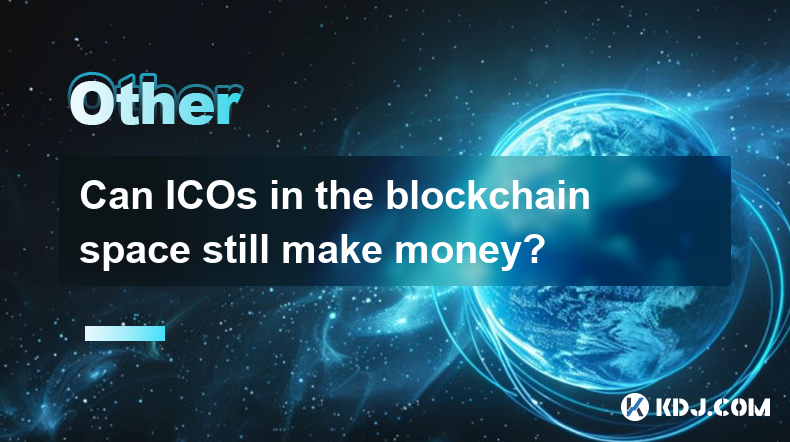
Can ICOs in the blockchain space still make money?
Apr 17,2025 at 08:29pm
The landscape of Initial Coin Offerings (ICOs) in the blockchain space has evolved significantly since their peak in 2017 and 2018. Despite the increased regulatory scrutiny and the rise of alternative fundraising methods like Security Token Offerings (STOs) and Initial Exchange Offerings (IEOs), ICOs can still be a viable way to raise funds and generat...

Can the application of blockchain in supply chain finance bring benefits?
Apr 15,2025 at 04:00pm
Can the application of blockchain in supply chain finance bring benefits? The integration of blockchain technology into supply chain finance has garnered significant attention in the cryptocurrency and financial sectors. This article explores how blockchain can potentially revolutionize supply chain finance, detailing its benefits and providing a compre...
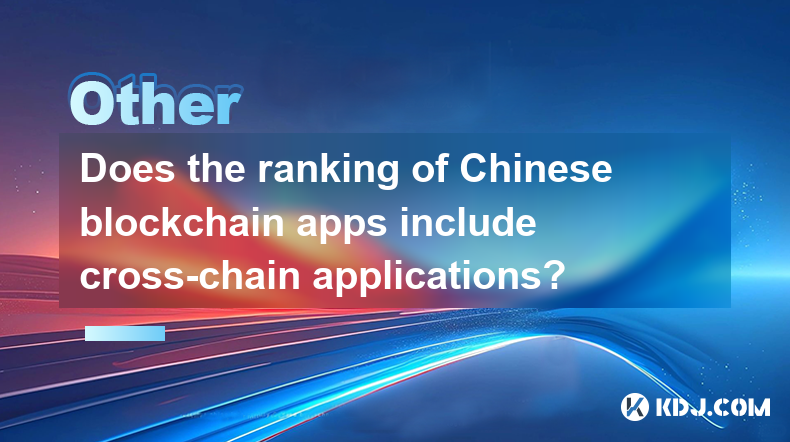
Does the ranking of Chinese blockchain apps include cross-chain applications?
Apr 14,2025 at 04:00pm
The ranking of Chinese blockchain apps is a comprehensive evaluation that takes into account various aspects such as user base, transaction volume, and technological innovation. A pertinent question arises regarding whether these rankings include cross-chain applications. Cross-chain applications, which allow different blockchain networks to interact an...
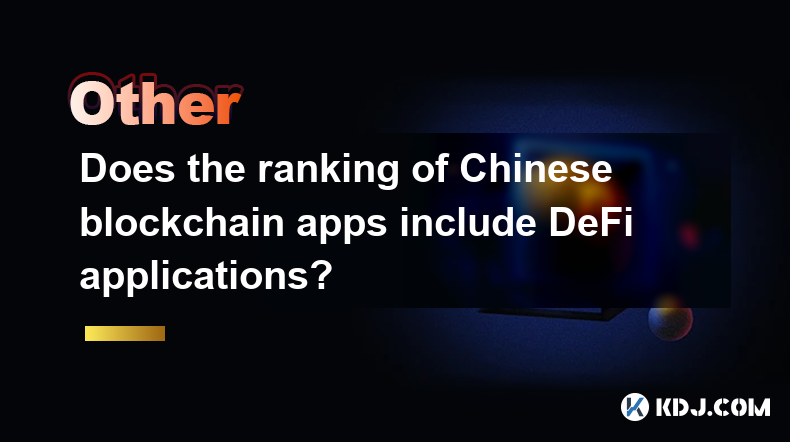
Does the ranking of Chinese blockchain apps include DeFi applications?
Apr 15,2025 at 06:57am
The ranking of Chinese blockchain apps is a comprehensive list that showcases the most popular and influential applications within the cryptocurrency ecosystem. One question that often arises is whether these rankings include DeFi applications. To answer this, we need to delve into the specifics of how these rankings are compiled and what types of appli...
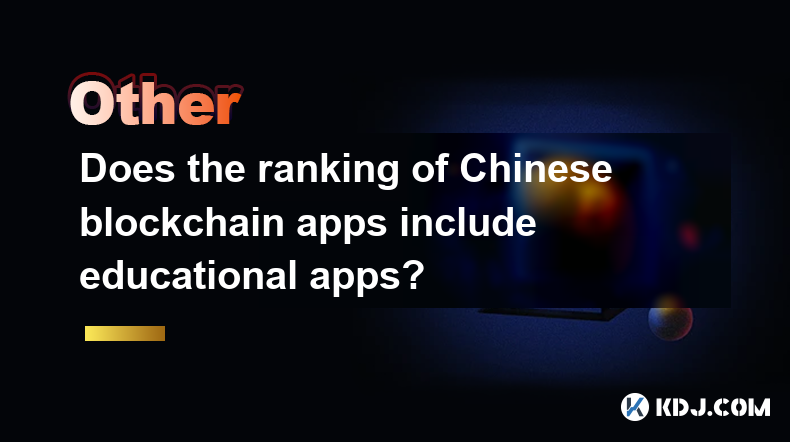
Does the ranking of Chinese blockchain apps include educational apps?
Apr 16,2025 at 03:35am
The ranking of Chinese blockchain apps often includes a variety of categories, from finance and gaming to social networking and beyond. One question that frequently arises is whether these rankings include educational apps. To address this, we need to delve into the specifics of how blockchain apps are categorized and ranked in China, and whether educat...
Does the ranking of Chinese blockchain apps include enterprise-level applications?
Apr 15,2025 at 06:42am
The ranking of Chinese blockchain apps often includes a variety of applications, ranging from consumer-focused to enterprise-level solutions. Understanding the scope and criteria for these rankings is essential to determine if enterprise-level applications are included. This article delves into the specifics of how Chinese blockchain app rankings are co...

Can ICOs in the blockchain space still make money?
Apr 17,2025 at 08:29pm
The landscape of Initial Coin Offerings (ICOs) in the blockchain space has evolved significantly since their peak in 2017 and 2018. Despite the increased regulatory scrutiny and the rise of alternative fundraising methods like Security Token Offerings (STOs) and Initial Exchange Offerings (IEOs), ICOs can still be a viable way to raise funds and generat...

Can the application of blockchain in supply chain finance bring benefits?
Apr 15,2025 at 04:00pm
Can the application of blockchain in supply chain finance bring benefits? The integration of blockchain technology into supply chain finance has garnered significant attention in the cryptocurrency and financial sectors. This article explores how blockchain can potentially revolutionize supply chain finance, detailing its benefits and providing a compre...

Does the ranking of Chinese blockchain apps include cross-chain applications?
Apr 14,2025 at 04:00pm
The ranking of Chinese blockchain apps is a comprehensive evaluation that takes into account various aspects such as user base, transaction volume, and technological innovation. A pertinent question arises regarding whether these rankings include cross-chain applications. Cross-chain applications, which allow different blockchain networks to interact an...

Does the ranking of Chinese blockchain apps include DeFi applications?
Apr 15,2025 at 06:57am
The ranking of Chinese blockchain apps is a comprehensive list that showcases the most popular and influential applications within the cryptocurrency ecosystem. One question that often arises is whether these rankings include DeFi applications. To answer this, we need to delve into the specifics of how these rankings are compiled and what types of appli...

Does the ranking of Chinese blockchain apps include educational apps?
Apr 16,2025 at 03:35am
The ranking of Chinese blockchain apps often includes a variety of categories, from finance and gaming to social networking and beyond. One question that frequently arises is whether these rankings include educational apps. To address this, we need to delve into the specifics of how blockchain apps are categorized and ranked in China, and whether educat...

Does the ranking of Chinese blockchain apps include enterprise-level applications?
Apr 15,2025 at 06:42am
The ranking of Chinese blockchain apps often includes a variety of applications, ranging from consumer-focused to enterprise-level solutions. Understanding the scope and criteria for these rankings is essential to determine if enterprise-level applications are included. This article delves into the specifics of how Chinese blockchain app rankings are co...
See all articles























































































